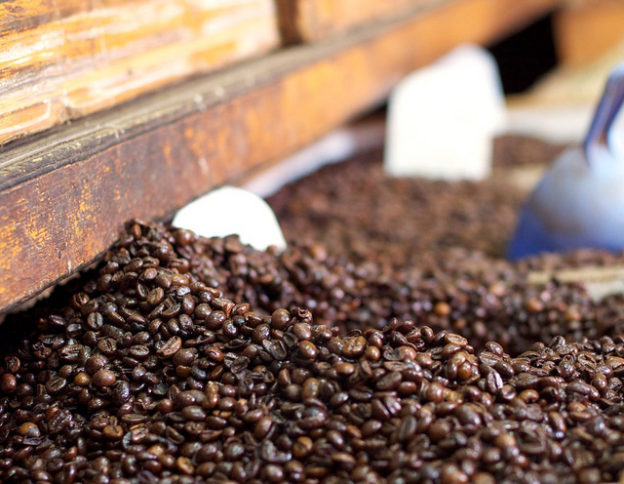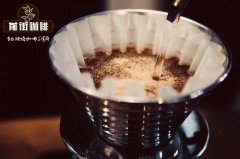Arabica coffee helps scientists absorb solar heat directly with organic colloids.

Professional coffee knowledge exchange more coffee bean information please follow the coffee workshop (Wechat official account cafe_style)
In addition to being a high-priced coffee with a supple taste and low caffeine, Arabica coffee now has new uses, and Italian scientists have successfully absorbed solar heat directly using colloids (fluids) containing Arabica coffee.

Solar energy is rich in resources, and people capture solar energy directly or indirectly, among which there are few ways to absorb solar thermal energy. at present, people mainly absorb solar thermal energy indirectly, such as using curved mirrors to concentrate solar light, and then convert solar energy into thermal energy by the principle of light and heat, but this method covers a wide area, and its efficiency will be more limited by the convective heat loss of the environment.
Although there is no way to absorb solar heat directly in the world, the current carbon-based nano-colloids have the problems of cytotoxicity (cytotoxicity) and environmental pollution. In response, Matteo Alberghini, a scientist at the National Institute of Optics in Italy, has found a solution to develop organic, pollution-free, stable and low-cost colloids.
Colloid sounds like a mysterious chemical term, which has little to do with ordinary people's daily life, but in fact, the soy milk and coffee on the table and the ink on the desk are all colloids, and different materials have different functions. Among them, the colloid surface can absorb heat, and then transferred to the internal fluid region, which can effectively prevent convection and radiation heat loss, so it is also used for solar collectors and heat carriers.
The Alberghini team made a new colloid G30 from distilled water, Arabica coffee, glycerin and copper sulfate. after further analysis of its photothermal properties, they also found that the nano-colloid could directly absorb solar heat.
They first added the coffee suspension to the water and put it into a scanning electron microscope (SEM) to assess the particle distribution, and then the scientists added glycerin and copper sulfate to reduce the freezing point and avoid the formation of algae or mold in the colloid.
In order to verify the endothermic effect of G30, scientists also carried out experiments on energy storage and optical properties according to different proportion of distilled water. Finally, it was found that coffee is behind the heat absorption of colloid. Once the proportion of distilled water is increased, the heat storage effect of colloid will be affected.
The Alberghini team also compared coffee colloids with existing solar collectors. The experimental results show that coffee colloids have shown the potential to capture solar heat directly, and the final results are consistent with the data obtained by computer models, further confirming that the photothermal properties of coffee colloids are similar to those of traditional indirect absorption techniques.
This makes it possible for scientists to use natural and organic methods to capture solar heat in the future, so that people's daily good friend Arabica coffee can help devices such as solar distillation, solar desalination, heating and sustainable solar radiation cooling, but it is unknown whether the team will use other varieties of coffee and other varieties of coffee in the future.
Important Notice :
前街咖啡 FrontStreet Coffee has moved to new addredd:
FrontStreet Coffee Address: 315,Donghua East Road,GuangZhou
Tel:020 38364473
- Prev

COE pilot project is successful, and ACE will bring outstanding achievements to Indonesian coffee.
Professional coffee knowledge exchange more coffee bean information please follow the coffee workshop (Wechat official account cafe_style) ACE, in cooperation with the Indonesian Fine Coffee Association and the AcehTenga government, has organized a pilot COE. All the photos were provided by ACE, a non-profit organization that conducted a preliminary COE trial in the town of Takengon in Aceh, Indonesia.
- Next

Yunnan coffee industry develops rapidly, Pu 'er International Fine Coffee Expo clinch a deal of 1.5 billion yuan
Professional coffee knowledge exchange More coffee bean information Please pay attention to coffee workshop (Weixin Official Accounts cafe_style) The 2nd Pu 'er International Fine Coffee Expo was held in Pu' er, Yunnan Province a few days ago. During the exhibition, there were many events, attracting 195,000 visitors and participants, with a comprehensive transaction volume of 1.5 billion yuan (RMB, the same below). This year's coffee fair will be held under the theme of "Pu 'er Coffee." global shared
Related
- Why can American refills for free? The difference between Americano and American drip pot coffee
- Being chased out of the rain in front of Starbucks?! Store: Sheltering from rain under umbrellas poses a safety hazard
- The white moonlight has changed?! Lucky launches "Big Winter Pear American"
- Hand-brewed coffee three-stage method, high-sweet and universal brewing method to share! What does the high sweet water level of hand-brewed coffee mean?
- What is the difference between raw, refined and full espresso coffee? How to extract espresso and taste good?
- A complete list of coffee bean names and their meanings! What is Yejia Shefi coffee? Where is Mantelin coffee?
- What grade does Arida Manor Kaduai coffee beans belong to? What treatment is Arida ASD slow anaerobic sun exposure?
- The milk tea cup becomes smaller?! Overlord Tea Girl launches a new "Return to Yunnan" series
- Accused of selling counterfeit and high-priced coffee beans! Well-known boutique coffee brand "Oukelao" bowed and apologized!
- How to make espresso dumplings? Can I eat coffee and glutinous rice balls together?

